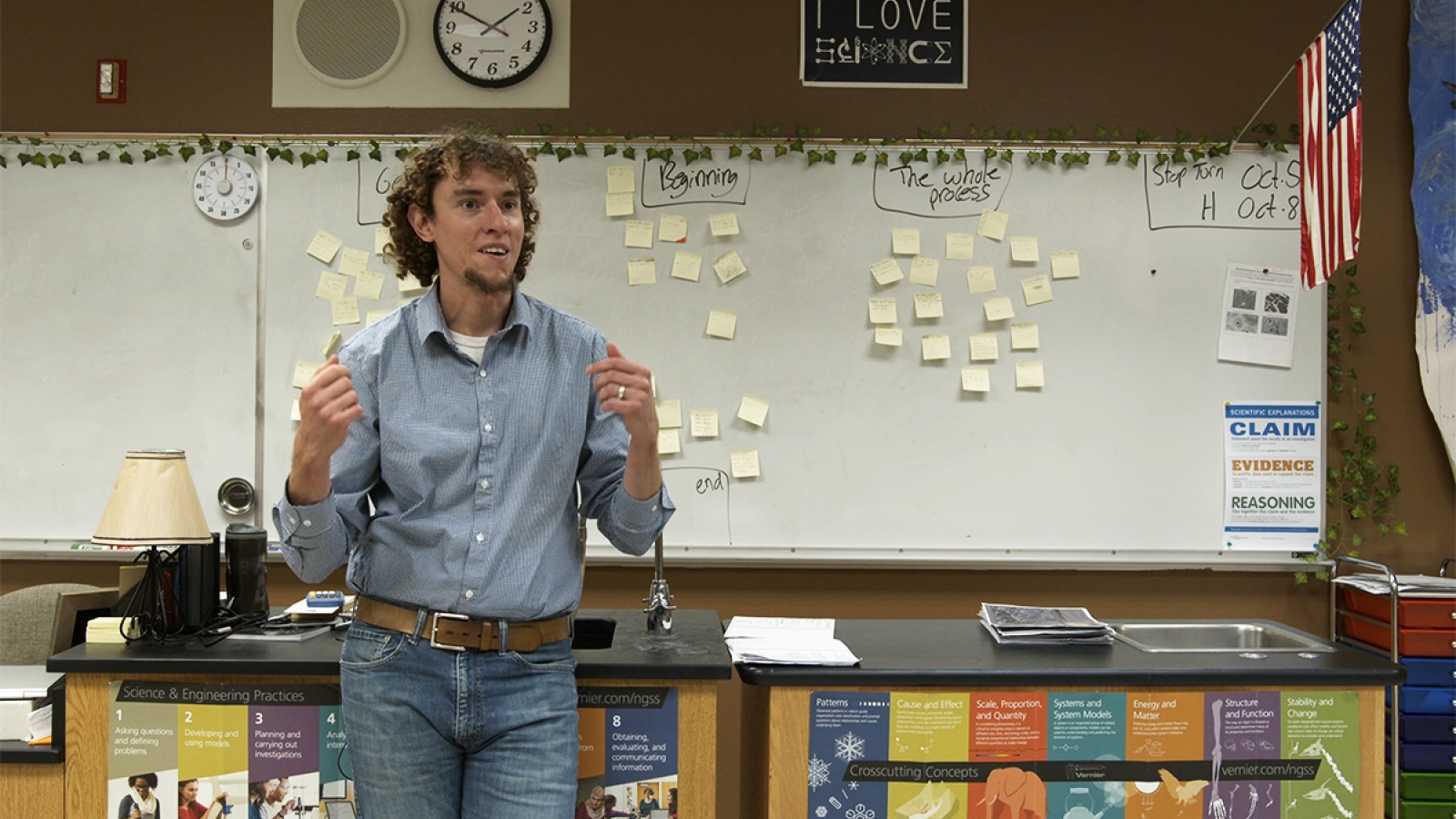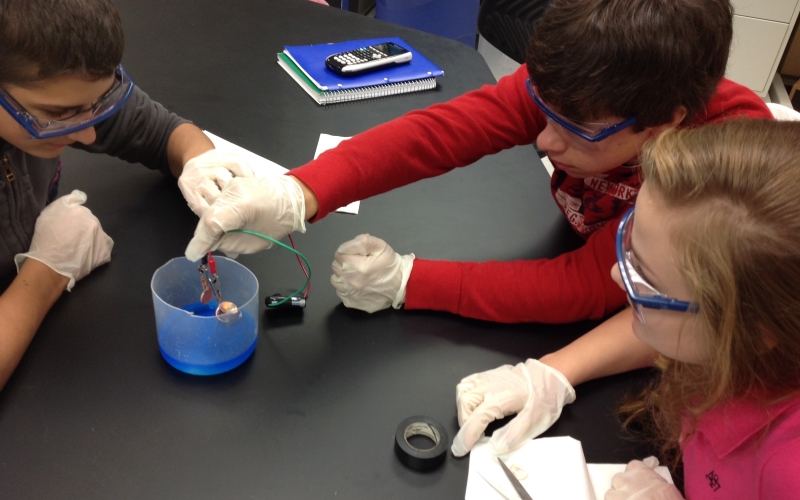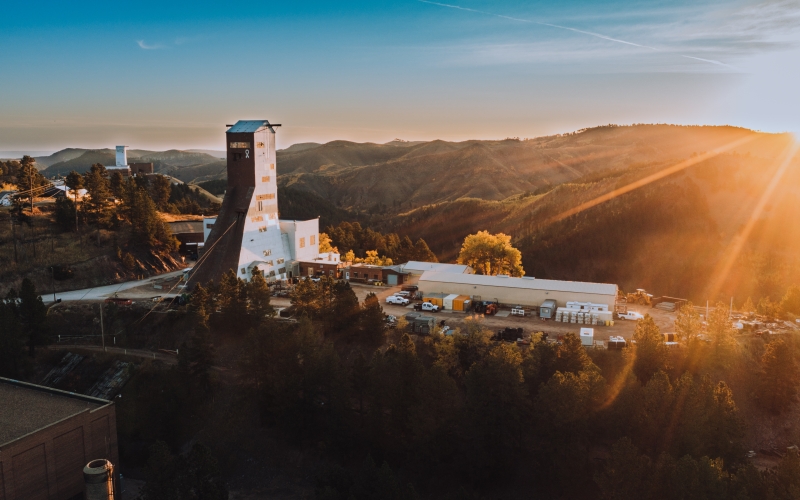
Darin Newton, who has a Masters in wildlife biology, found an unexpected fulfillment as a substitute teacher, then made a full career change.
When Darin Newton graduated from the University of Montana with a master’s degree seven years ago, he fully expected to be working in his area of study: wildlife biology. When his wife, also a wildlife biologist, took a job in the Belle Fourche area, Newton began working as a kindergarten assistant and substitute teacher in the Belle Fourche school district. It was a temporary thing, meant to last only until he found a job in his field. But then something completely unexpected happened.
“I really enjoyed being around the kids,” Newton said, smiling broadly. “And then the next two years I moved up in the different grade levels and found that I really enjoyed being in the classroom. I really enjoyed interacting with the students. And that got me thinking, ‘maybe this is something I could get into.’”
After his third year as a substitute teacher, Newton applied for a full-time position as a middle school science instructor. He also enrolled at Black Hills State University where he earned a Master of Science in Education.
“I did a complete career shift. I wasn't super confident about it—it was a leap. But yeah, after five years of teaching, I'm really glad I did,” Newton said.
About the time Newton began teaching full time, the school district implemented the new South Dakota science standards, which emphasize three-dimensional learning. Our understanding of science and engineering changes all the time. Three-dimensional learning shifts science education from rote memorization to thinking and acting like a scientist to application and problem-solving.
It was a new way of teaching and, like other teachers, Newton was struggling. That’s when he signed up for the teacher professional development program offered by the Sanford Underground Research Facility’s Education and Outreach Department. The educational concepts directly leverage the science taking place at Sanford Lab. Educators can use the real phenomena and unsolved questions being explored underground to generate student interest, allowing student questions to drive the learning, as they master South Dakota science standards.
“I saw this opportunity, and I jumped on it. I'm really glad I did,” he said. “I had some ‘Aha!’ moments as I was going through that professional development.” Newton began to see how three-dimensional learning might look and began applying it in his classroom. Later, Newton signed on to help facilitate professional development programs with E&O.
“Darin embraces every challenge and every opportunity with hopeful optimism,” said Nicol Reiner, STEM educator development specialist with E&O. “He is thoughtful and curious, which means he is a great leader, and he asks really good questions.” One of the participants in the program said Newton had “a wealth of experience, enthusiasm, and commitment to transformative ways of teaching science.”
Currently, Newton is piloting a new curriculum unit, “Stuck like glue, stuck on you,” which focuses on biofilms, as illustrated by dental plaque. The module was developed by Becky Bundy, E&O education specialist, with input and feedback from her team members and teachers.
“As you can imagine, that got some interesting reactions from the students,” Newton said, laughing. “They have a lot of fun with the activities and show a lot of excitement.”
“Darin seemed a perfect fit for piloting the new Biofilms unit as he had also helped lead the summer professional development workshops that featured the unit,” Bundy said. “So, unlike other piloting teachers, he already had some familiarity with the content, the strategies used, and how the lessons tie together to tell a story.”
And it’s the idea of a “story” that most interested Newton.
“In the last couple of years, I’ve really gotten interested in the concept of storylines and how three-dimensional teaching can improve the experience for students,” Newton said, adding that students learn in different ways.
As part of EPSCoR (Established Program to Stimulate Competitive Research)*, Newton and a partner were tasked with developing a concept into a unit. Their goal? To create wonder and generate curiosity using a phenomenon that was connected to South Dakota. They chose to explore “dead zones” in the Gulf of Mexico.
“We used that because South Dakota is connected to those zones through agricultural and sewage runoff which runs through our waterways and into the Gulf of Mexico,” he said. “It helps students understand that even though we are as interior in the United States as you can get, there still can be major impacts on places that are hundreds of miles away.”
Teaching three dimensionally taught Newton something else.
“It opens the door to all sorts of learning opportunities for students. It allows students who might be struggling with traditional methods to grasp concepts and then be able to show you what they learned,” he said. “And that’s what you want to see in your classroom.”
*Sanford Lab’s E&O team is developing teacher professional development for EPSCoR; Darin Newton took part in the first year. Read more about the grant and program here.
The Education and Outreach program is a collaborative venture between Sanford Underground Research Facility and Black Hills State University. Our goal is to use the excitement and promise of deep underground science and engineering to inspire and engage students, educators and the wider community through a variety of programming.


